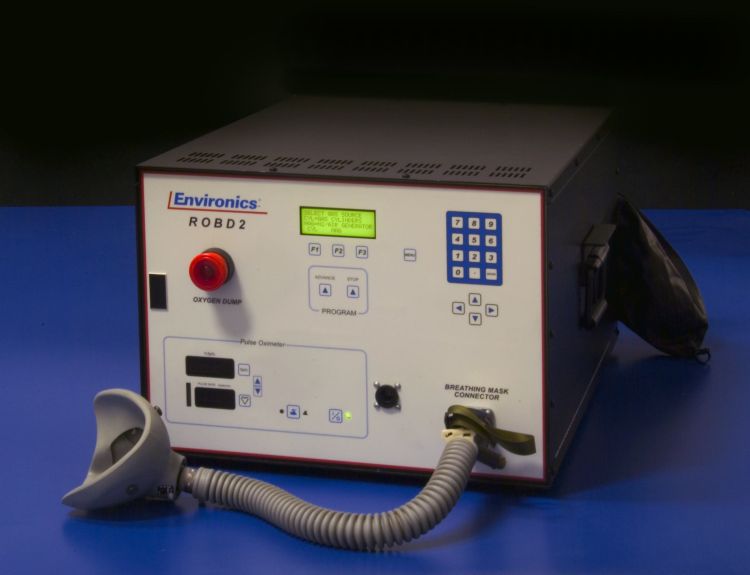From time to time, we like to showcase the research of our customers. Our team is always interested in learning more about the huge variety of research projects and discoveries made in labs using Environics systems.
The Environics Reduced Oxygen Breathing device is used worldwide in the training of aviators and others who regularly are flying at altitude. Using the ROBD2, they learn what it feels like to be hypoxic. However, the system is not solely used for training. Several researchers have used the ROBD2 for hypoxia related projects. Today, we focus on the results of a recently published study by lead author, Leonard Temme (Vision Sciences Branch, Sensory Research Division, U.S. Army Aeromedical Research Laboratory at Fort Rucker, AL).

Mild traumatic brain injury (mTRI) is more commonly known as concussion. In general, it is suggested the recovery from this type of injury takes 7-10 days, although there is more and more research in terms of those who suffer mTRI repeatedly (such as football players). This recovery time is based on observations made in individuals under unstressed environmental conditions such as a doctor’s office or hospital. The authors wanted to examine how putting someone under stress would affect people who have a history of such a trauma. The question was would a person with a medical history of a concussion who seems recovered become symptomatic when exposed to a stress such as sleep deprivation, pharmaceuticals, extreme temperature, anxiety or hypoxia.
A chance observation made during a training study led the authors to this question. Pilots were exposed to a normobaric hypoxic condition that simulated conditions seen at 18,000 feet using an ROBD2. While “flying”  under standard conditions, the pilots behaved comparably. However, when the pilots were breathing air with only ~10% oxygen, one pilot lost control of the aircraft without realizing it. Looking into this pilot’s medical history, the researchers found he had experienced a significant concussion ejecting from a high-performance aircraft. This chance observation led the authors to this question: Would a stressor, in this case hypoxia, help uncover a symptom that was unobservable under normal conditions?
under standard conditions, the pilots behaved comparably. However, when the pilots were breathing air with only ~10% oxygen, one pilot lost control of the aircraft without realizing it. Looking into this pilot’s medical history, the researchers found he had experienced a significant concussion ejecting from a high-performance aircraft. This chance observation led the authors to this question: Would a stressor, in this case hypoxia, help uncover a symptom that was unobservable under normal conditions?
To begin, two sets of 36 subjects between 18-50 were gathered from the community: one group with a history of mTBI and one without. The subjects were then matched “on the basis of age, gender, tobacco smoking consumption, weight, height, and body mass index” for comparison purposes. Utilizing eight tests from the BrainCheckers test battery, the subjects were examined under both standard conditions and three different reduced oxygen conditions.
While seven of the tests showed no significant difference between groups, the performance on the M2S test, which is a measure of short-term visual memory, did. Under reduced oxygen stress, those with a history of mTBI showed a significant impairment when compared with the control group.
The researchers’ findings open up potential avenues for using hypoxia to test brain stress following mTBI. The authors’ state, “Such a capability would be particularly important since mTBI, even when apparently completely recovered using conventional examination strategies, may include deficits observable only under stress.”
Having a way to clinically measure recovery from mTBI would be a great advantage. It will be interesting to follow these studies.
To read the full article, click here.
Have an interesting project using your Environics system? Share it with us and you may be the included in our next focus!

